Coastal Artillery War Badge, by C. Schwerin (in zinc)
CATEGORY: Version
SKU: 01.GTR.0905.101.03.001
Estimated market value:
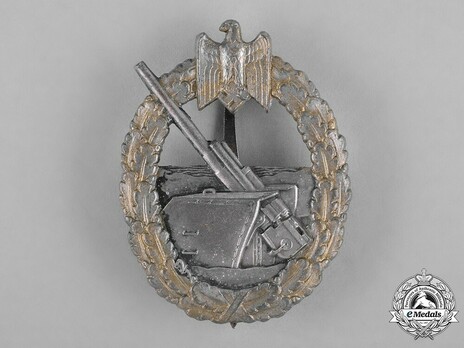
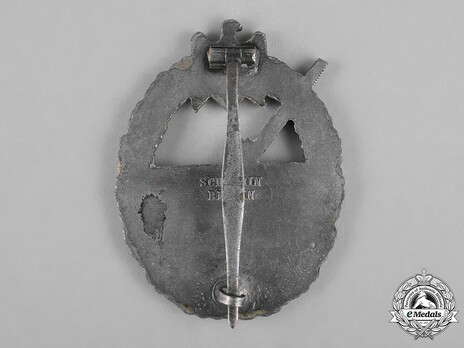
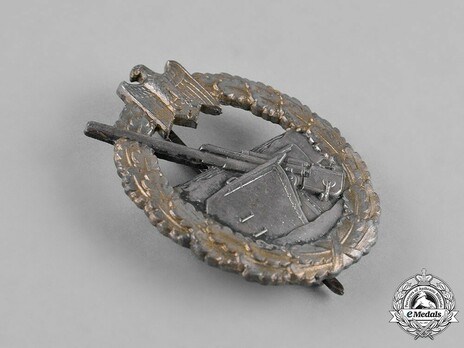
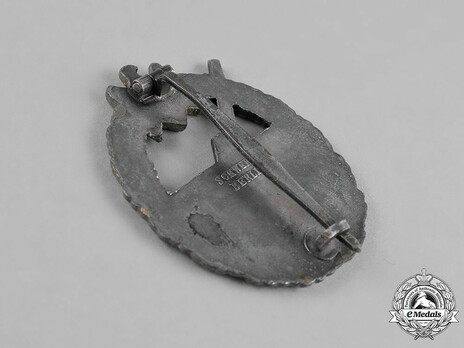
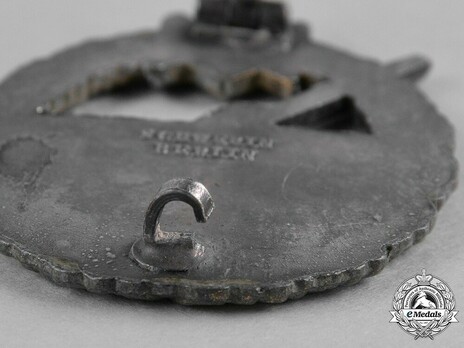
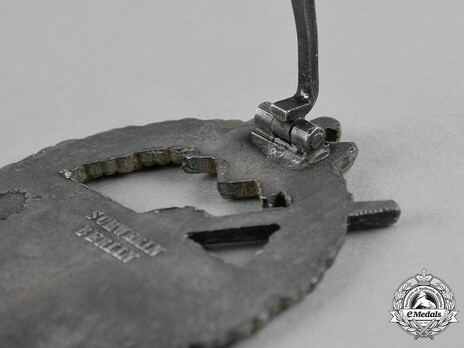
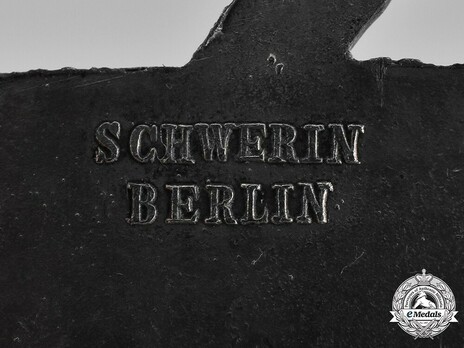
Estimated market value:
(Kriegsabzeichen für die Marineartillerie). Constructed of silvered zink, the obverse depicting a gilded oval oak wreath, topped by a German national eagle clutching a mobile swastika, with a central coastal artillery gun pointing toward the top left, extending past the wreath, the reverse with a barrel hinge and banjo-style pinback meeting a flat wire catch, maker marked “Schwerin, Berlin”, measuring 41.89 mm x 54.56 mm, weighing 24.5 grams, in better than very fine condition.
The Coastal Artillery War Badge was instituted on June 24, 1941, and was conferred upon members of Coastal Artillery units who protected the German-occupied coastline and attempted to prevent enemy surface landings and aerial attacks.
The Coastal Artillery was a branch of the Kriegsmarine whose primary mission was to detect and shoot down Allied aircraft as they approached the coastline. The Coastal Artillery was also tasked with manning fortified defense stations against amphibious invasions.
The badge was conferred upon combat units and soldiers regardless of rank, as well as upon soldiers who were wounded or killed in action. Recipients were nominated for the badge by their commanding admiral.
On January 28, 1942, it was determined that in order to receive the award, an individual had to have a good service record and history of conduct, rendered outstanding leadership in their assigned role, performed a singular act of valour, or been wounded or killed in action.
In order for a gun crew to receive a collective award, they had to accumulate a total of 8 points. One point was awarded for each enemy aircraft the crew downed; one point was awarded for downing an aircraft in conjunction with another battery; a half point was given to searchlight crews for each enemy aircraft they detected, which resulted in it being downed; two points were awarded for successful work with a radio detection unit, which resulted in an enemy aircraft being downed; two points were awarded for the successful completion of planned fire direction, which resulted in an enemy aircraft being downed.
On October 27, 1942, it was announced that the badge could be retroactively awarded to personnel of the Marine Assault Company who had participated in the ground fighting during the Polish Campaign. This only included soldiers who had actively fought in the campaign.
On September 15, 1943, Flak defense personnel and naval assistants to gun crews became eligible to receive the award.
The badge was designed by Otto Placzek in Berlin.
Badges by Schwerin are marked “Schwerin” with “Berlin” underneath. Badges are made of tombac or zinc.

Comments
Sign in to comment and reply.


Scroll Top